10 Things You MUST Do to Your Lawn Before September Ends! (Step-by-Step)
As September comes to an end, it’s the perfect time to give your lawn some much-needed attention before the cold weather sets in. This month offers ideal conditions for lawn maintenance and improvement, with cooler temperatures and more manageable weather.
In this article, we’ll walk you through 10 essential tasks to tackle in your yard before the month is over, ensuring a healthy and beautiful lawn all year round.
From vital lawn care tasks like aerating and overseeding to simple cosmetic upgrades, these steps will help you prepare your yard for the upcoming season while enhancing its overall appearance.
Not only will your lawn benefit from these improvements, but so will the various plants, trees, and wildlife living in your garden.
Aerate Your Lawn
Aerating your lawn is an essential step in lawn care, especially as September comes to an end.
By this time, your yard has likely experienced a great deal of foot traffic and mowing throughout the warmer months, which can lead to soil compaction. Compacted soil prevents water, air, and nutrients from reaching the grass roots, making it difficult for your lawn to thrive.
To maintain a healthy lawn, core aeration should be on your to-do list. Core aeration involves removing small cores of soil and lawn from the ground, allowing air, water, and nutrients to penetrate deeper into the soil. This promotes stronger root growth and overall health for your grass.
Here’s a quick guide to help you with core aeration:
- Choose the right time and conditions: The best time to aerate your lawn is during the early fall or late summer, when the grass is actively growing. Ensure the soil is moist but not too wet, as dry soil can make the process difficult and less effective.
- Select the appropriate aerator: There are two main types of lawn aerators, spike aerators and core aerators. Opt for a core aerator as it removes soil plugs, while spike aerators simply create holes that might further compact the soil.
- Prepare your yard: Before starting the aeration process, mow your lawn to a shorter height and clean up any debris. This helps to prevent clogging and makes it easier for the aerator to penetrate the soil.
- Aerate your lawn: Move the core aerator across your yard in an overlapping pattern, similar to mowing. Be sure to make multiple passes, covering every area at least twice to ensure optimal results.
- Post-aeration maintenance: After aerating, it’s a good idea to overseed your lawn and apply fertilizer to aid in the recovery process. The new grass seeds will fill in the gaps and create a lush, healthy lawn.
Incorporating core aeration into your lawn care routine will improve the overall health and appearance of your yard, making it more resilient and vibrant. By tackling this task before September ends, you’ll set your lawn up for success in the months to come.

Apply a Fall Fertilizer
One of the most important tasks for your lawn before September ends is applying a fall fertilizer.
This is because your grass needs the extra nutrients and energy to recover from the summer heat and prepare for the colder months ahead. Fertilizing your lawn in fall helps to strengthen its root system and promotes healthier growth in the following spring.
When selecting a Fall fertilizer, look for one with a formula containing a higher amount of nitrogen (such as 20-8-8). Nitrogen will encourage blade growth and boost your lawn’s overall health. Compost can also be added to your lawn; it provides vital nutrients and improves soil structure, making it a great addition to a fall garden.
Remember to follow the instructions on the fertilizer packaging and avoid applying too much, as it can burn your grass or lead to nutrient imbalances. For the best results, target the application of your fall fertilizer in early to mid-September.
Overseed Bare Grass Spots
Overseeding your lawn is a vital step to address bare patches, protect against weeds, and maintain its allure.
As September wraps up, now’s the perfect time to get started.
Steps to Effective Overseeding:
- Select the Right Seed:
- Opt for cool-season grasses like Kentucky bluegrass, especially for soil temperatures below 65°F.
- Match the grass seed variety to your current lawn for a seamless look.
- Preparation:
- Clear the lawn of debris and obstacles.
- Pre-water the target area for optimal seed growth.
- Seeding:
- Distribute seeds evenly over bare spots.
- Use a gentle raking method to mix seeds into the soil. Avoid overcrowding.
- Post-seed Care:
- Thoroughly water the area.
- Maintain consistent moisture for at least two weeks to aid germination.
By addressing those patches now, you’re not just fixing a current issue but investing in the overall health and aesthetic of your lawn. Proper and timely care ensures your lawn remains at its best.
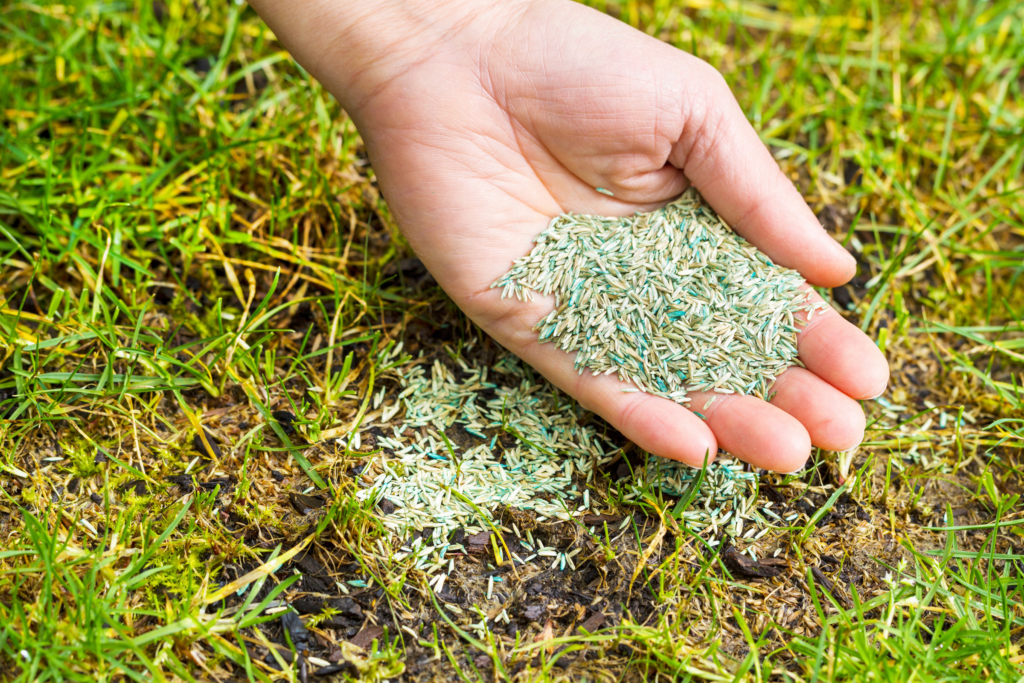
Adjust Your Mowing Height
During the fall, it’s generally recommended to gradually reduce the height of your grass with each mowing, but not to cut it too short. Here’s a breakdown of the reasoning:
Reasons to Gradually Cut Your Grass Shorter in the Fall:
- Preventing Fungal Diseases: Longer grass can trap more moisture, which can lead to fungal diseases during the cooler, damp fall weather.
- Leaf Accumulation: Shorter grass helps prevent leaves from getting caught and accumulating on the lawn. Accumulated leaves can smother the grass underneath.
- Winter Preparedness: As winter approaches, particularly in regions where snow accumulates, shorter grass can prevent snow mold and other issues related to prolonged snow cover.
However, it’s crucial not to cut the grass too short, as this can stress the grass and make it more susceptible to winter damage. The recommended height can vary based on the specific type of grass you have, but generally, you should aim to leave the grass at about 2 to 2.5 inches tall for cool-season grasses.
For those in warmer climates with warm-season grasses, the lawn typically goes dormant in the cooler months. You might not need to mow as frequently, but when you do, avoid cutting the grass too short.
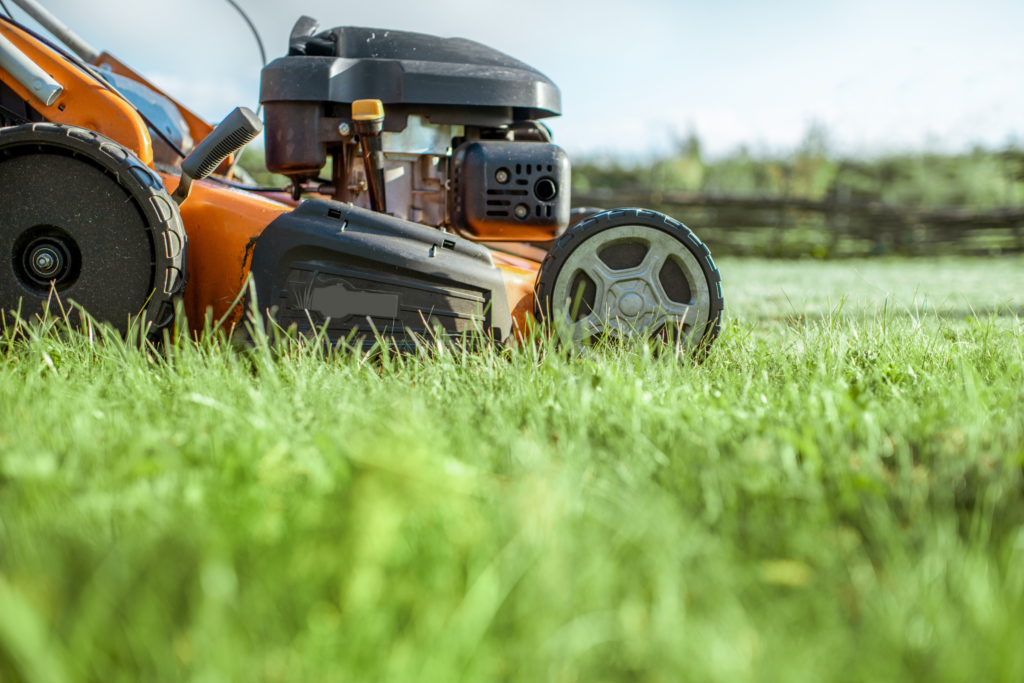
Dethatch Your Grass to Promote Growth
Dethatching your lawn allows your grass to breathe and access the necessary air, water, and nutrients. It’s important to dethatch your lawn at the end of summer so it can recover before winter sets in.
Thatch is a layer of organic material, such as dead grass, moss, and other debris, that accumulates on the soil surface. While a thin thatch layer (less than 1/2-inch) can be beneficial as it acts as mulch for soil moisture retention, a thick layer can prevent water and nutrients from reaching the grass roots.
Ignoring this excessive buildup can cause your grass to become weak and susceptible to diseases.
Steps to Effective Dethatching:
- Mow First: Reduce your lawn’s height to half to simplify dethatching.
- Choose the Right Tool:
- Small lawns: A standard rake might work.
- Large/heavily-thatched areas: Use a dethatching rake or machine.
- Adjust Blade Settings:
- If using a machine, set blades to dig no deeper than 1/2-inch into soil.
- Get clear instructions on machine operation to avoid lawn damage.
- Clean Up:
- Post-dethatching, rake and dispose of the lifted debris.
Before you start dethatching, mow your lawn to half its normal height. This will make it easier for you to remove the thatch effectively. Next, choose the right tool for the job.

For small lawns, a regular rake might suffice, but for large or heavily thatched areas, you may want to invest in a dedicated dethatching rake or a dethatching machine. Both these tools have tines or blades that dig into the thatch and pull it up to the surface.
Once you’ve successfully dethatched your lawn, rake up and dispose of the debris. This will leave your grass free to absorb essential nutrients and promote healthy growth as we move into the fall season.
Water Your Grass with Precision in the Fall
Caring for your lawn in September requires precision, especially when it comes to watering.
As the month goes by and temperatures decrease, it’s essential to maintain the right watering schedule for your lawn and garden.
- Water early in the morning: The best time to water your lawn is during the early morning, ideally before 10 a.m. This is because the temperature is still cool and the wind and sun are less intense, meaning the water can soak into the soil and be absorbed by the grass roots before it evaporates.
- Be consistent: To keep your lawn looking its best, consistency is crucial. Water your lawn deeply and infrequently, about once or twice a week, depending on the weather conditions in your area. This helps grass roots grow deeper and stronger while promoting overall lawn health.
- Use the right watering technique: When it comes to watering your lawn, avoid overwatering. Too much water can cause root rot, fungus, and other issues. Instead, water your grass less often but deeper to ensure that the moisture reaches the root system effectively.
- Monitor weather conditions: Keep an eye on the forecast so you can adjust your watering schedule accordingly. If rain is expected, you may be able to skip a watering session or reduce the amount of water you use. Conversely, if a heatwave is on the horizon, make sure to water your lawn and garden more frequently to keep them hydrated.
By following these tips and watering with precision, you’ll ensure your lawn and garden thrive as September comes to an end.
Control Weeds and Pests
Before September ends, it’s crucial to control weeds and pests in your lawn and garden. Implementing effective weed control methods will promote healthy plant growth and create a well-maintained appearance.
The same goes for pest control, as they can wreak havoc on your lawn and garden if left unaddressed.
- 1. Manual removal: One of the simplest ways to control weeds is by manually removing them from your lawn and garden. Make sure you remove the entire root system to prevent regrowth. Use a weeding tool or your hands to remove weeds efficiently.
- 2. Chemical herbicides: If manual removal seems too labor-intensive, consider using chemical herbicides to kill weeds. Always follow the label instructions and be cautious around other plants, as some herbicides can harm them as well.
- 3. Maintain healthy soil: Good soil can ward off garden insect pests, so starting with clean soil and rotating crops can help you avoid attracting pests in the first place.
- 4. Watering: Ensure you water your lawn and garden deeply twice a week, rather than daily shallow watering. This practice promotes deep root growth, making it harder for weeds to establish themselves. Moreover, water plants in the early morning to avoid creating favorable conditions for pests.
- 5. Beneficial insects: Introducing beneficial insects, like ladybugs and lacewings, can help control harmful pests in your garden. These insects naturally prey on common garden pests, keeping their populations under control.
- 6. Insect traps: Set up insect traps throughout your lawn and garden, which can help you track and reduce the number of pests. Sticky traps, pheromone traps, and light traps are all effective options.
- 7. Keep your garden clean: Regular garden maintenance, like removing dead leaves and debris, helps prevent pests from finding hiding spots. Additionally, controlling weeds will make your garden less attractive to these unwanted guests.
- 8. Pest-resistant varieties: When selecting plants for your garden, opt for pest-resistant varieties, as these are less prone to attracting common pests.
- 9. Cover garden beds: To deter weeds, cover your garden beds with materials like cardboard, newspaper, or black landscaping fabric before planting. Ensure you secure them with heavy bricks to keep them in place.
- 10. Lawn maintenance: Regular lawn maintenance activities, like mowing and fertilizing, help maintain a healthy lawn which, in turn, resists weeds and pests more effectively. A well-groomed lawn is less welcoming to unwanted visitors, so be sure to stick to a maintenance schedule.
By following these steps, you’ll be able to control weeds and pests in your lawn and garden, ensuring a healthy, beautiful space before September comes to an end.
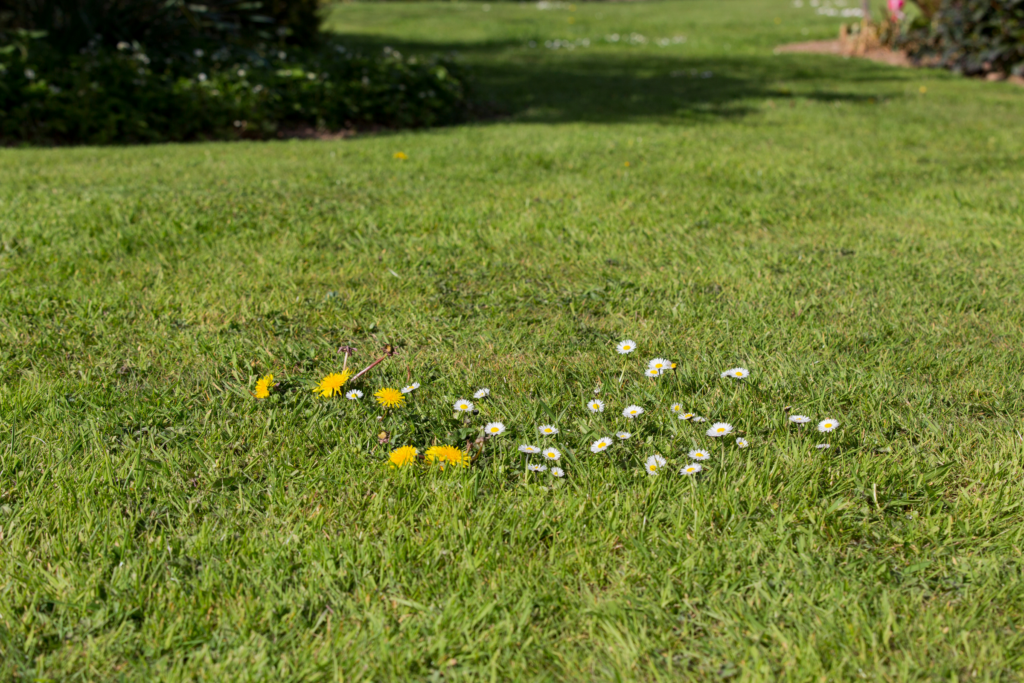
Protect Vulnerable Areas
As September comes to an end, cooler temperatures and frost can pose a threat to your lawn and garden. To protect your yard from potential damage, it’s essential to take preventive measures.
Here are some steps you can take to safeguard your lawn in the face of changing weather conditions:
First, pay attention to your local weather forecast. Keep an eye on the temperatures and frost dates to determine when to start preparing your lawn for the cooler months ahead. This will help you make informed decisions about when to implement protective measures.
When the threat of frost looms, take the time to cover vulnerable plants. You can use blankets, sheets, or other materials to keep them warm and shielded from the cold. Be sure to remove the coverings during the day to allow sunlight and air circulation.
Mulching your garden beds can also help protect your plants’ roots from cold temperatures. A layer of organic material like leaves, straw, or wood chips can help insulate the soil and moderate temperature fluctuations. Aim for a 2-3 inch layer of mulch around your plants.
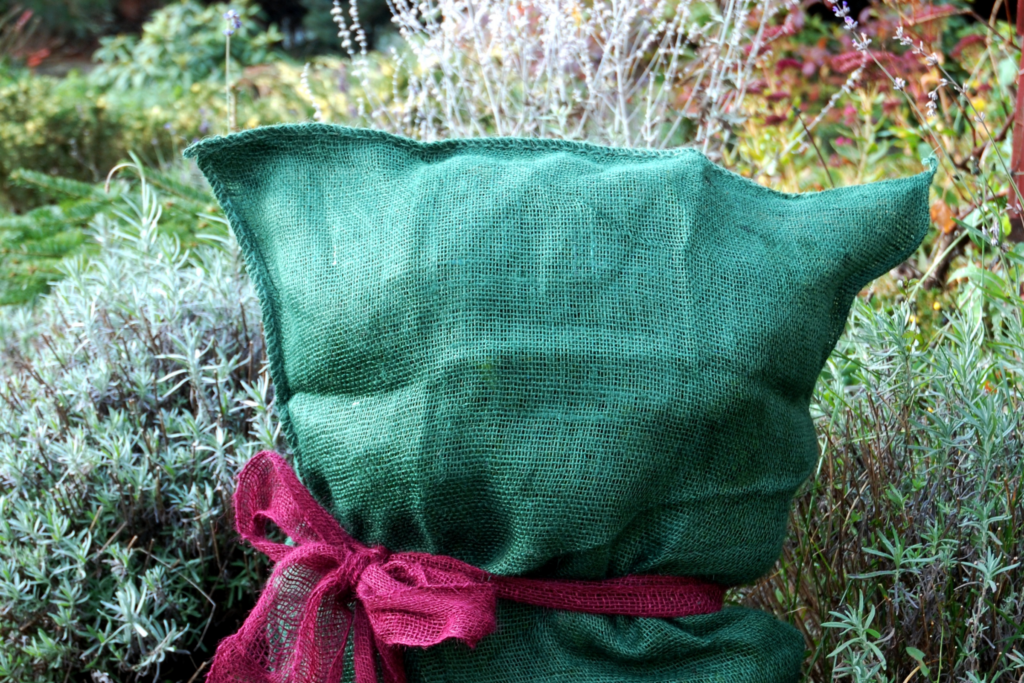
For your lawn, avoid heavy traffic during periods of frost. Excess foot traffic or using heavy equipment on frosty grass can cause damage to the blades and root system. Limit activities like mowing and aeration to when the lawn is dry.
Finally, as the days get shorter, be sure to adjust your watering schedule accordingly in September. Gradually decrease the frequency and amount of water you apply to your lawn and garden. This will help your plants gradually adjust to the decreasing levels of sunlight and moisture.
Prep Your Garden Beds
As September draws to a close, it’s essential to prepare your garden beds for the colder months ahead. Doing so will ensure that your autumn and spring plants get the best possible start and your soil remains healthy.
- Clear Garden Beds:
- Remove weeds and invasive roots to prevent nutrient diversion.
- Harvest frost-sensitive veggies like tomatoes, peppers, and zucchini.
- Dispose of any diseased plants to halt disease spread.
- Prep Soil for Autumn Crops:
- Incorporate compost for essential nutrients and better soil structure.
- Aim for moisture retention with organic matter from compost.
- Autumn Vegetable Choices:
- Opt for cool-weather veggies like Swiss chard, carrots, pumpkin, spinach, beets, and arugula.
- Flower Garden Recommendations:
- Plant spring bulbs such as tulips and daffodils; they need cold dormancy.
- Add cool-temperature annuals like pansies, snapdragons, and calendula.
- Include perennials: asters, mums, and sedum for autumn beauty.
- Boost Soil Health:
- Use cover crops like clover, rye, or vetch to:
- Suppress weeds.
- Add organic content.
- Prevent soil compaction.
- Till them under in spring for enriched soil.
- Use cover crops like clover, rye, or vetch to:
- Ensure Proper Aeration:
- Check for soil compaction from summer or winter and aerate as needed for root and water health.
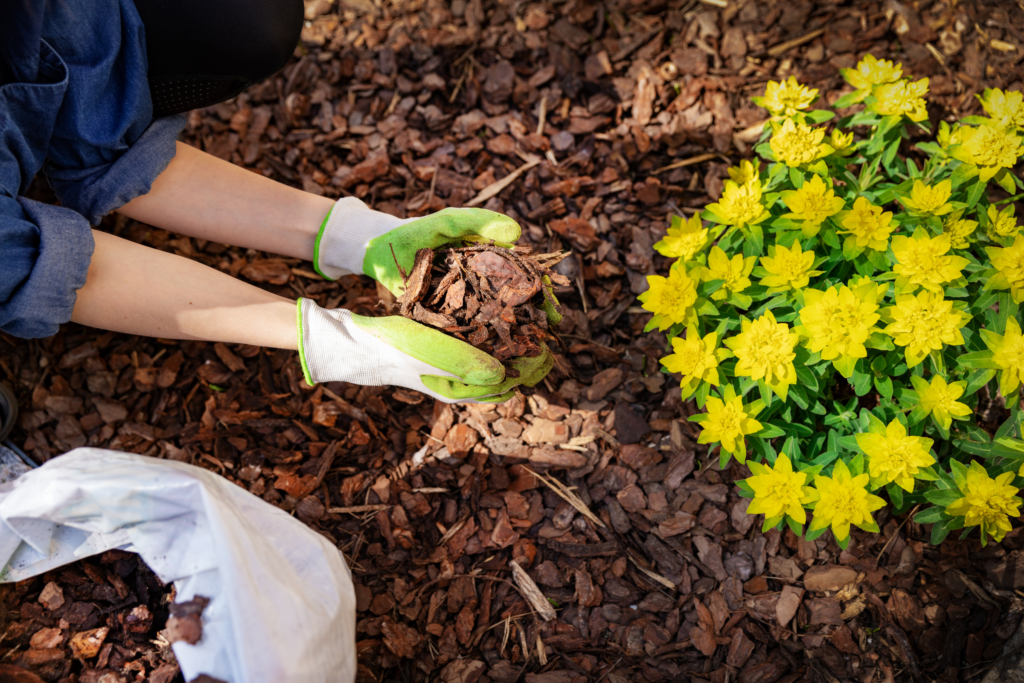
Clean and Store Lawn Equipment
As September comes to an end, it’s essential to clean and store your lawn equipment to prepare your yard for fall and keep your tools in good condition. Here are some steps to properly clean and store your equipment:
- Clean your lawn mower: Before storing your lawn mower, give it a thorough cleaning. Remove grass clippings and debris from the mower deck, blades, and wheels. Take the time to inspect the air filter, spark plug, and oil level, as well as sharpen the blades if needed.
- Drain or stabilize fuel: It’s important to either drain the fuel or add a fuel stabilizer to your lawn mower, trimmer, or leaf blower to prevent any potential damage to your equipment during storage.
- Clean and organize your hand tools: Wash your rakes, shears, and shovels of dirt and debris. Inspect them for any damage and repair or replace as necessary. Store them in a dry place, preferably hanging them on the wall to save space and keep them organized.
- Tended to powered equipment: Clean your string trimmer, leaf blower, and other powered equipment by removing any debris and checking for any loose parts that might need tightening or replacement. Make sure to drain or stabilize the fuel in these tools as well, just like your lawn mower.
- Store equipment properly: Create a dedicated space for your lawn equipment in your garage, shed, or other storage area. Consider using shelves, wall-mounted hooks, or storage containers to keep your tools organized and accessible.
- Protect your equipment: Finally, protect your lawn equipment from dust, moisture, and other potential damage by covering them with a tarp or placing them in a protective storage container.
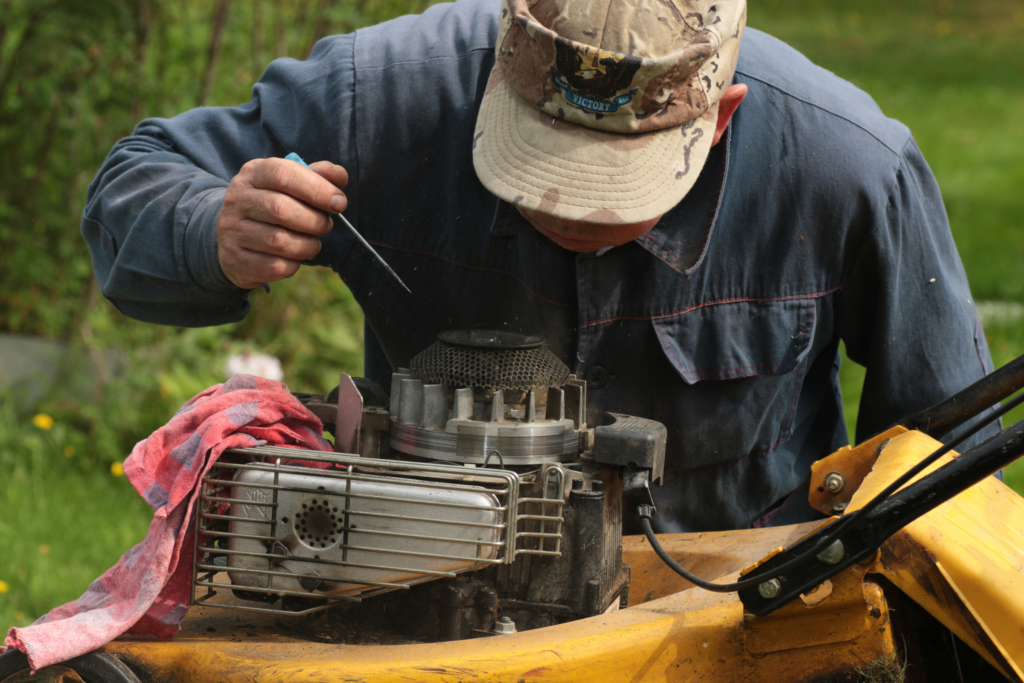
By following these steps, you’ll ensure that your lawn care equipment stays in excellent condition during the off-season and is ready to use when you need it again. Proper maintenance and storage will also help prolong the life of your tools and make your yard work more manageable and effic
Let Us Know How We’re Doing!
Did this expertly prepared resource answer your question?
Do you have another question about home maintenance, home improvement projects, home appliance repair, or something else?
Get more information, send in questions and keep the discussion going by contacting the I’ll Just Fix It Myself company customer service team at at 1-800-928-1490 or Email us at [email protected]
